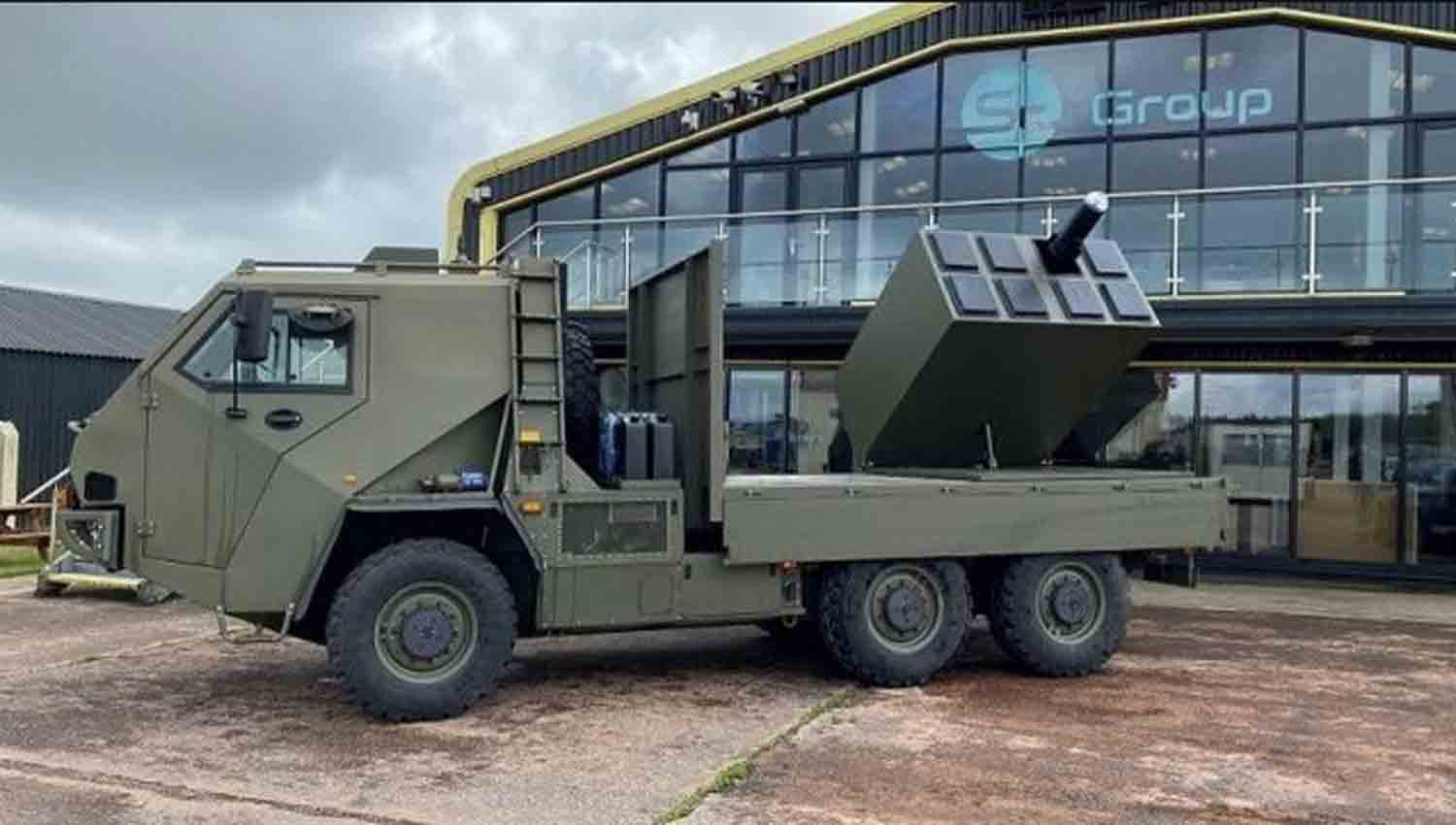The UK government revealed a new military aid package worth £150 million (approximately $186 million) for Ukraine during a meeting in Brussels on Wednesday. This funding is intended for the provision of drones, tanks, and air defense systems, as reported by Reuters and RIA Novosti.
Details regarding the specific systems and platforms to be delivered are not yet available. However, it is known that the UK plans to supply short-range Gravehawk air defense systems by 2025. This recent financial commitment is part of a broader £4.5 billion package allocated by London for military assistance to Ukraine this year.
Ukrainian forces have already utilized British jet-powered kamikaze drones in operations against Russian targets. While additional deliveries of Challenger 2 tanks appear unlikely due to their limited availability, the funds are expected to be directed towards refurbishing and upgrading Leopard 1 or T-72M1 tanks, potentially sourced from Czech reserves, before being dispatched to Ukraine.
Since the onset of Russia’s full-scale invasion in February 2022, the United Kingdom has been a key supporter of Ukraine, providing substantial military aid to enhance Kyiv’s defense capabilities against Russian aggression. By the end of January 2025, the UK had pledged nearly $16 billion in military support, establishing itself as one of Ukraine’s most reliable allies.
This assistance encompasses a diverse range of equipment, training initiatives, and financial backing, underscoring Britain’s strategic objective to aid Ukraine in repelling Russian forces while simultaneously bolstering its own security and defense sector.
From the beginning, the UK was one of the first countries to provide lethal assistance, establishing a benchmark for other Western allies. In early 2022, London supplied anti-tank weapons such as NLAWs and Javelin systems, which were crucial in stopping Russian armored advances during the early phases of the invasion.
By March 2022, the UK had also sent Starstreak missiles, body armor, helmets, and boots, with more than 4,000 NLAWs delivered to Ukrainian forces. This initial support was vital as Ukraine faced significant pressure, especially around Kyiv, and contributed to shifting the momentum in favor of the Ukrainian defenders.
As the conflict evolved, the UK’s support grew in both breadth and complexity. By mid-2022, Operation Interflex, a UK-led training initiative, was initiated, training over 50,000 Ukrainian recruits by the end of 2024. Supported by 12 allied nations, the program aimed to equip troops with essential battlefield skills, extending into 2025 to ensure ongoing preparedness.
The UK also began to provide more advanced systems, including cruise missiles, air defense systems, and long-range precision strike capabilities. In 2023, Britain committed to maintaining its 2022 military aid levels, which totaled $2.9 billion, and by 2024, it pledged $3.8 billion annually, a commitment reiterated by Finance Minister Rachel Reeves in October 2024, highlighting support “for as long as it takes.”
However, the UK’s military assistance has faced challenges, particularly concerning its own stockpiles. The donation of equipment such as Challenger 2 tanks—14 dispatched from a limited active stockpile of 157—raised concerns about readiness for potential large-scale combat operations.
The UK addressed this challenge by utilizing international collaborations, notably through the International Fund for Ukraine, which has garnered over $1.6 billion in pledges from allies for swift equipment acquisition.
In 2025, a significant $286 million agreement with BAE Systems revitalized artillery barrel manufacturing in Yorkshire, with components dispatched to Ukraine for assembly, representing a major enhancement for both Ukrainian military capabilities and UK industrial development.
By January 2025, the UK’s cumulative military assistance since February 2022 encompassed more than 400 distinct capabilities, including drones, air defense systems, maritime vessels, and munitions. A key advancement was the Gravehawk air defense system, a joint initiative between the UK and Denmark aimed at adapting air-to-air missiles for ground defense, specifically designed to meet Ukraine’s requirements.
Furthermore, the UK broadened its training initiatives, welcoming Ukrainian officer cadets to the Royal Military Academy Sandhurst and dispatching British cadets to Ukraine for the exchange of battlefield expertise. Prime Minister Keir Starmer emphasized Britain’s dedication in January 2025, stating that “Ukraine’s security is our security,” highlighting the strategic significance of this support.
On the financial front, the UK has taken a leading position in innovative funding strategies. In 2025, it extended a $2.9 billion loan under the G7 Extraordinary Revenue Acceleration scheme, which is to be repaid through profits generated from frozen Russian sovereign assets.
This loan, combined with $3.8 billion in annual military assistance, has allowed Ukraine to procure essential equipment, including systems manufactured in the UK. The UK’s leadership is also evident in its sanctions efforts, which, in coordination with the US and EU, have resulted in a loss of over $400 billion in revenue for Russia since 2022, intensifying pressure on Moscow’s military operations.
While the UK’s support has been substantial, it has not been free from domestic and international challenges. The resurgence of artillery production and defense contracts has generated employment and fostered economic development, aligning with the government’s Plan for Change.
Nonetheless, there are ongoing concerns regarding the long-term viability of such assistance, particularly in light of possible changes in US policy under President Donald Trump, who resumed office in January 2025.
Critics contend that Europe’s dependence on limited defense contributions may expose it to risks, yet the UK’s initiatives—such as the swift advancement of systems like Gravehawk and ongoing training programs—illustrate a proactive approach to enhancing Ukraine’s resilience and strengthening its own strategic role in European security.
Discover more from Defence Talks | Defense News Hub, Military Updates, Security Insights
Subscribe to get the latest posts sent to your email.





